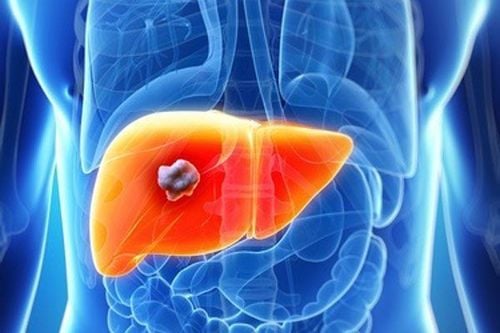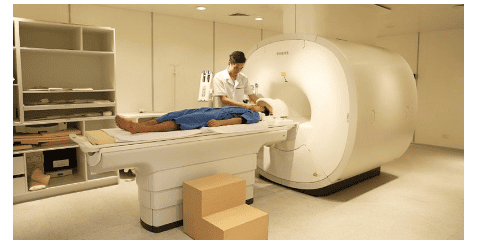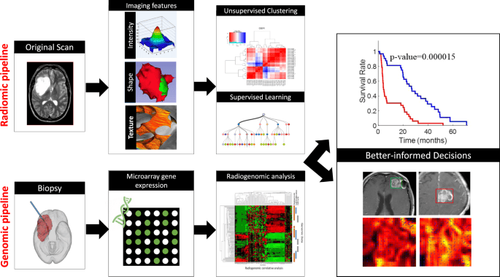This is an automatically translated article.
The article is professionally consulted by MSc, BS. Dang Manh Cuong - Radiologist - Radiology Department - Vinmec Central Park International General Hospital. The doctor has over 18 years of experience in the field of ultrasound - diagnostic imaging.1. Amebic liver abscess on computed tomography
Amoebic liver abscess is also known as an abscess caused by Entamoeba histolytica. It is divided into 2 stages: localized hepatitis and purulent hepatitis.The abscess is usually an area of aseptic necrosis spreading in the liver parenchyma, with little inflammatory response to the healthy liver parenchyma. It is more common in the right lobe than in the left lobe.
Clinical signs: Fever, right lower quadrant pain, hepatomegaly, pain when pressing the intercostal space. Laboratory tests show leukocytosis (especially polymorphonuclear leukocytes).
Complications of amoebic liver abscess: rupture of the abscess spreading to the pleura, pericardium (left liver abscess) or into the abdomen.
1.1. Imaging diagnosis of amoebic liver abscess To diagnose early and guide aspiration and treatment of abscesses, people use ultrasound, magnetic resonance imaging and computed tomography of the liver.

Stage of abscess has not pustulated: The area of decrease in density before and after injection is not clear. The liver parenchyma around the injured area remains unchanged. This stage is difficult to differentiate from other localized liver lesions, it is necessary to rely on clinical examination, serological reactions, etc. The abscess has turned pus: The abscess is round, has a reduced density, has a fluid structure, clear walls, clear boundaries, strong contrast enhancement after injection. There is a reduction ring around. In addition, liver computed tomography also helps to detect complications of abscess such as rupture spreading to the pleura, into the abdomen...vv.v. In case the structure of the necrotic foci is uneven, it is necessary to distinguish it from a liver tumor, it is necessary to look for other signs of liver computed tomography, to evaluate more specifically the tumor such as: liver vascular status (thromboembolism, level of blood clots, blood clots, etc.) degree of infiltration...), blood vessels entering the tumor, the condition of the liver parenchyma around the abscess...
2. Bacterial liver abscess on computed tomography
2.1. Overview Are foci of pus formed in the liver parenchyma due to bacteria entering through:Biliary tract: Biliary tract infection due to stones or worms, biliary obstruction due to tumor. Blood sugar: Mainly due to bacteremia. Portal vein: The primary source of infection is colitis, appendicitis, and pancreatitis. Adjacent line: Gallbladder abscess, subdiaphragmatic abscess, pyelonephritis, pyelonephritis. Due to doctors or trauma: Surgery, liver and biliary interventions with instruments.

3. Liver parasites on computed tomography
3.1. Overview The parasites that can cause liver infection are:Liver flukes: Large liver flukes (larvae in snails, aquatic plants) and small liver flukes (larvae of snails, fish). According to the procedure, the liver fluke will penetrate the gastric wall and Glisson capsule, enter the liver parenchyma and enter the peripheral biliary tract. Kyste hydatique: Fluke cyst. Schistosomiasis (Billharziose) For diagnosis mainly look for larvae in stool or serological examination.

Large liver fluke In the parenchymal stage, the liver will be enlarged, painful, and feverish. Computed tomography of the liver showed a long cuboidal hypodense area below the liver capsule.
Biliary phase: There are signs of obstructive jaundice, on the liver CT scan, there are lesions close to the liver capsule, many small cystic masses. The wall is not sharp, there is little enhancement, concentrated in clusters, distributed in 1 segment or subsegment.
Baby liver fluke On computed tomography of the liver, the biliary tree is mildly dilated, with thick, irregular walls. Inflammatory infiltrate around the portal vein, thickened gallbladder wall, can see flukes in the biliary tract.
Kyste hydatique (cystic flu) Currently not found in Vietnam. The larvae of the fluke Echinococcus granulosus are parasitic in the liver. Cysts are usually larger than 10cm in size.
On unprepared radiographs, signs of cystic calcification can be seen.

Stage 1: Translation block within clearly visible limits. Stage 2: All or part of the larval membrane is separated and floats in the fluid. Stage 3: The fluke heads appear in the form of small cysts located in the periphery or the whole cyst, with a honeycomb image. Stage 4: The solid mass is filled with fluke heads, the heads are calcified and flattened. Stage 5: Corticosteroid calcifications In summary, liver infection can be life-threatening if not diagnosed and treated promptly. Therefore, screening for liver infection on computed tomography is very necessary. Currently, computed tomography is an imaging method performed routinely at Vinmec International General Hospital. The computerized tomography procedure at Vinmec is carried out methodically under the guidance of the medical team of the Department of Diagnostic Imaging. In addition, Vinmec is now equipped with the most modern CT scanner, meeting international standards for true and clear images, helping doctors to accurately diagnose the disease and the stage of the disease, thereby effective treatment, creating a sense of safety for the patient.
Please dial HOTLINE for more information or register for an appointment HERE. Download MyVinmec app to make appointments faster and to manage your bookings easily.














